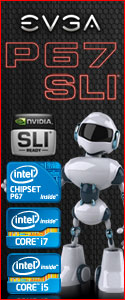What makes a computer case special? Is it because it has plenty of storage space or lots of fancy lights? Maybe it is for the reason that it is great for water cooling? All these questions and more must be answered when purchasing a computer case.
We at OverclockersTech have reviewed many computer cases ranging from the unusual Lian Li T1 Spider chassis. To the enormous Coolermaster Haf X and the Thermaltake Level 10 GT. Now we bare the latter mentioned cases in mind and then finally throw in the behemoth-like ‘Mountain Mods’ cases into the mix and the result is an interesting brew indeed.
A few short months ago our very own ‘Lvcoyote’ gave the Thermaltake Chaser MK1 a gold award and when reviewing this product with the eye of air cooling, and it richly deserved our coveted award. However, let us now review the same product but looking at it from the viewpoint of a water cooling enthusiast! Will the product still receive a gold award even when factoring in its great air cooling potential? Or will it slip down the scales slightly? Only an in depth review from a water coolers viewpoint will reveal the truth.
Here at Overclocker’s Tech we have two sides in the industry. We have our esteemed fellow reviewer ‘Lvcoytote whom is our ultimate guru when it comes to air cooling and yours truly for water and the more exotic forms temperature control. With this in mind we have decided to once again review the Thermaltake Chaser MK1, however ‘we have a twist in the tale’, as this time we are taking a look at the LCS (Or Liquid Cooled Solution) version of the same case.
Before moving on make sure you catch ‘LV’s’ fantastic and informative review at:
Thermaltake-chaser-mk1-case-review
Company Background
We live in a world where most things seem to move at the speed of light. At Thermaltake, we feel the same way and that is exactly how Thermaltake conducts itself to deliver innovative, reliable and customer-centric solutions to the worldwide market.
Since the beginning of Thermaltake in 1999, it has been at the forefront of creating new and exciting products at a time where most computer users were provided little to no choices for components that may seem irrelevant, but in reality crucial to the performance of a PC.
While still a relatively young company, established in 1999, Thermaltake is built on unwavering will and dedication to address issues and innovate at the same time for computer enthusiasts and corporate users worldwide .
Customers are our greatest asset and Thermaltake does not take that for granted. That is why Thermaltake is the industry leading in customer service and customer support with around-the-clock automated product return service.”
Features
Features/Specifications |
|
| Command Center | With Chaser MK-1′s fan controller onboard, gamer and enthusiasts can appreciate the convenience of adjusting the fan speed or lighting effect of the computer system. |
| USB 3.0 SuperSpeed | Tired of reaching to the back of the computer to connect a USB 3.0 device? Chaser MK-1 features latest USB 3.0 ports with internal header. Two USB 3.0 ports are conveniently located on the front of the case. |
| HDD Docking Station | By adapting world’s best selling BlacX Docking Station concept into a computer case, users can now effortlessly transfer large volume of data without the need for a conventional external storage device. Simply insert any 2.5 or 3.5 SATA hard drive into the docking station and start enjoying hot-swap capability and blazing-fast transfer speed through SATA interface. |
| VGA TripleMax 33CM | All of today’s high-end and advanced graphic cards that are capable of delivering ultra-realistic, immersive and intense gaming experience have longer than usual form factor which means not all computer case will fit. Chaser MK-1 not only address this concern by supporting graphic card up to 330mm in length, but also designed cooling surrounding the graphic card location to improve heat dissipation and reduce acoustic output. |
| CableClear Cable Management | Dramatically improves thermal efficiency of the computer system by ensuring power cables do not get in the way of airflow. |
| Enthusiasts Water Cooling Ready | Includes the Thermaltake 850 GT Big Water System |
| Combat Headset Holder | Headset holder designed into the case allows gamers to store their gaming headset easily and securely. |
| Heightened Foot Stands | High thermal efficiency case that address all common and uncommon issues. Heighten foot stands elevate the whole computer system enough to prevent rug or any other soft flooring material from blocking the air intake/exhaust found on the bottom of the case. |
Wow quite an interesting mix of specifications there, however let us carry on with the review and examine what makes this case different from others and overview the water cooling system itself.
Packaging
The outer packaging is of a blue theme that is rather eye catching and blends between the differing hues in to one scheme. The box has the e-sports logo emblazoned into the artwork and includes what looks like a’ Manga’ style alien/robot that has been faded in with the background. Our own personal opinion is of this, PC’ owner are generally more mature in nature and age than your typical console owner. Thermaltake needs to bare this in mind for future box packaging and use an image that more relevant to the product. Having said this, the artwork and the presentation in general is rather beautiful.
 |
 |
 |
 |
Having said the above, the outer box packaging arrived to our offices looking rather battered, possibly from an over-zealous courier. However when the case was removed from the box we need not have worried as the inner foam cartons (standard fare on all pc chassis) protected the product from any harm.
 |
However all in all the packaging design is eye-catching and is of a high quality standard
Next up Let us take a look around the outside of the Thermaltake Chser MK1 LCS
External Looks
Our first impressions of the case are of a high quality in nature. Its ruggedness reminds us of a ‘Warhammer Space Marine; albeit in a baby blue and black looks rather than a red based colour. Let us start the outside ‘tour’ of the of the case beginning with the top panel. The IO panel is of a high quality nature sporting E-SATA and the USB 2.0/3.0 ports. There are two of each type which should serve most consumers needs. On the left hand side is the controls that change the speed and the LED lighting colour. Finally above these we find the reset button.
 |
 |
 |
 |
 |
 |
Just above the I/O panel we find the X-Dock feature! This allows the consumer to insert a hard drive into this slot without having to open up the side of the case. Note: to make use of the ‘Hot-Swap’ feature then ‘AHCI’ must be enabled within the system BIOS.
Finally we move on to top panel itself. This is removable in order to install 200mm fans which leaves at least four centimeters of depth. However, this creates some rather interesting issues, which we will discuss later.
 |
 |
The previously mentioned panel has a filter attached in order to prevent dust from entering the system.
The front of the case also sports the same rugged look and has four 5.25 inch bays. However, two of them are filled by the Thermaltake 850 GT liquid Cooling system. The bay covers themselves are easily removable by simply pressing in the ‘tabs’ and the cover just falls off. This makes a change from some designs where the whole front of the case must be dis-assembled in order to ‘screw off’ the bay covers.
 |
 |
 |
 |
 |
 |
 |
 |
Each bay cover (similar to the top panel) features a handy washable dust filter.
At the lower half of the front panel there is a rather large 200mm fan. This is the aforementioned colour changing fan which serves as the air the intake for the chassis.
 |
 |
The side panel has a rather interesting window shape that is very different from your usual bland rectangle look, however it is rather small and this creates an issue. If the end-user purchases a liquid cooled system, then they will wish to ‘show it off’ to its full glory. However, because the side panel has been designed to accommodate a 200mm fan then the window size was sacrificed. In our view a 140mm fan will be better served here therefore allowing the window to be larger in order to display the full internal workings.
 |
 |
 |
 |
The panel also sports a handy little flip down bracket to hang your gaming headphones when the computer is not in use. This simply lifts back into position when the headphones are not present.Well done Thermaltake for a simple and inventive idea.
The bottom panel of the chassis has four large feet which can be rotated and locked into position at 0, 45 and 90 degree angles. The feet also sport the baby blue stripe that is the theme of the whole chassis. Next on the same panel we notice a rather large dust filter in order to prevent particles from entering the air intake of the consumers precious and rather expensive power supply unit.
 |
 |
 |
 |
The right panel sports no unique features or windows except that its confirms to the shape of the case. We will move right ahead to the rear panel. The latter-mentioned has three water cooling holes which have high quality rubber grommets preventing any tubing from being ‘cut’ by the metal. There are also eight PCIE blanking plates and of course the bay area for the power supply unit.
 |
Well, that is it for an external look, so let us now continue to have a look at the mysterious ‘innards’ of the Thermaltake Chaser Mk One LCS chassis.
Internal looks
Inside we notice many articles; the large black box which holds the liquid cooling accessories, the brown one underneath which houses the case parts and finally a bottle of UV Green fluid for the water cooling. Why Thermaltake have chosen green is anyone’s guess? This is a black and baby blue themed chassis and a green based liquid cooling solution would stick out like a sore thumb.
 |
 |
Next we have the motherboard tray. Now this unfortunately is not a removable model, however given the amount of room inside the chassis and the options for wire management then really it is a feature not needed. Speaking of the wire management, this case offers a high quality standard and is second only to some ‘Coolermaster’ cases we have reviewed on here. Every option is catered to with the first hole coming right after the power supply bay area in order to cut down the visible exposure of the wires.
 |
 |
 |
 |
Finally we have the hole for the CPU mounting area. Of course most people know the use of this, that is the end user can mount and un-mount a water cooling block that requires a backing plate or a heatsink of the same mounting mechanism all without having to remove the motherboard from the chassis.
 |
Up until now everything has more or less been ‘sweetness and light with Chaser LCS chassis. But now we come to some concerning issues. The radiator (shown below) is of the aluminium type (more on this later) and when combined with the fans makes it difficult to gain access to the eight pin CPU EPS connector on the motherboard.
 |
However the issue does not end there because Thermaltake have seen fit to provide a fancy removable top in order to install fans which in turn has narrowed the available space between the motherboard edge and the radiator/fan combination. Indeed the latter leads slightly over the motherboard edge leading to the mention of the first issue. If Thermaltake would have done a solid top and placed everything internally then this would have saved the very much needed four centimetres of space. If this would have been added internally a larger gap between the trailing edge of the motherboard and the top panel would be the result. This would then have made the case more desirable for professional water cooling enthusiast and they would have been able to install a full depth radiator, which are at LEAST 50mm PLUS 25mm for the fans.
This is indeed a rather large oversight by Thermaltake.
The bad news on this section keeps on coming really, as shown below. Even with Thermaltakes own radiator, the top panel’s 200mm mounting struts cover part of the radiator thus potentially spoiling the radiator performance. This combined with the abnormal fan spacing causes issues, more on the fan spacing later.
 |
 |
 |
 |
 |
 |
 |
 |
The two penultimate photos show the radiator issue. If only Thermaltake had transferred this space underneath the removable top panel to the space between the motherboard and the inside-top panel, then this would not have been an issue and every option present would have room to spare and more.
The photos below shows the 120mm exhaust fan, which even on full RPM is almost silent. Finally the well constructed bay area, holding the power supply and its large removable dust filter.
 |
 |
Now we look at those wonderful looking drive caddies that have a lovely baby-blue colouring to them. Reminding us of the old ‘gigabyte’ range of motherboards, we have a series of removable caddies to support hard and solid state drive.
 |
 |
 |
 |
To operate the above simply ‘flip the locking lever to the right hand side and out pops the caddy. Then just remove the two locking tabs, place the drive into the caddy and attach the clamps again. Finally insert the whole thing back into the bay area, it’s that simple and it works wonderfully.
 |
Next we have the’ tool free’ 5.25 inch bays. All that needs to be done is to slide in the device, push in the tab and slide the leaver to the ‘lock’ position. Again so simple its genius!
As mentioned before in this review the top and front panels can be pulled off and pushed on with ease. However in the case of the top panel this makes the case hard to carry and one must be aware of the panels coming off when lifting the chassis.
 |
 |
This now completes our interal look of the Thermaltake Chaser Mark One LCS chassis.
Next we look (cue James Bond Villian laugh here) we look into the heart of the Chaser Mark One chassis and that will be its Liquid Cooling System.
The Liquid Cooling System
Before going any further we would like to stress our position when we evaluate ANY liquid cooling or any chassis that supports the aforementioned. We review these with the eye of a professional water cooling enthusiast and of the complete beginner. When we combine the two, we come up with our resulting comments.
This reviewer, having helped to design many computer motherboards, liquid cooling systems and given feedback on the designs as well as being the winner of Universal abit UK OC contest of 2006, and second place for Gigabyte 2010 is in a unique position to not to only see things from a end user viewpoint, but also from a realistic manufacturing stand point.
Right, on with the review:
Opening the black accessories box that was packed inside the case we find the following:
- Water cooling Block
- 3/8″ OD Green UV Tubing
- Clips for various sockets for the water block
- Thermaltake Compound
- Clamps for the tubing
- Quick disconnects.
Once again we wonder why Thermaltake have chosen UV green tubing in a Black and baby blue case, it just does not match
 |
 |
 |
 |
The latter pictured pump and reservoir come pre-packed within the case and not within the black box (as shown at the start of the review)
 |
 |
 |
 |
 |
This shiny metal box comes with a slow-sensor to make sure your pump is working correctly, the AP 500 pump and a tiny reservoir. The latter is a cause for concern as if this takes two 5.25″ inch bays up then a larger capacity reservoir should be utilized. A better option, if Thermaltake are confident of their pumps, would be a submerged model, rather like the XSPC model (link below)
Submerged Pump Inside a Dual bay reservoir
Earlier we hinted at the radiator so now we will take a quick tour through it.
This radiator is marketed as a ‘sports’ model. What this really means is that it is of the alumninium type rather than the copper/ brass variety. Whilst not an issue for the amateur/first time water cooling users, the more experienced or professional users would see this as negative point. Combine this with non standard hole spacing of 18mm rather than 15mm for 120mm based radiators, then we have yet another issue.
If one wanted to change the fans from Thermaltake’s own to another brand then a piece of neoprene foam will be needed to stop air escaping from between the them.
Lastly, it is worth mentioning this is a very thin radiator, and in theory performance will be limited because of that. The radiator length is 240mm. Yet as stated earlier the radiator over shadows the edge of the motherboard.
 |
 |
 |
 |
 |
 |
 |
 |
Another issue we find with all of Thermaltakes LCS offerings, the fittings and the tubing are of a non-standard variety. The standard used in a more professional system (that is the lowest sized tubing) would be 3/8 inch ID (inner Diametre) and 5/8″ (Outer Diametre) However the ‘OD’ on this tubing is 3/8 inches and as such is not standard.
Next we have the water cooling block itself. The build quality looks to be excellent and has a sturdy feel. However Thermaltake would have been better served using a clamp and motherboard backing plate option, rather than the standard Intel mounting variety. The reason for this is that this gives a much better pressure and contact range that the Intel Standard mounts could never hope to achieve.
 |
 |
 |
 |
Finally we come to the fans. These are of the 120mm model and they come with a built in fan controller. In all honest low speed mode is quiet as a mouse but high speed are headache inducing and the performance results between both speeds doesn’t justify the headache (more on this later).
 |
 |
 |
 |
W could not find this model fan on Thermtake’s own site as a separate product, however we can conclude that fan ranges are possible between 1300 RPM to 3000 RPM.
After the 24 hours compulsory leak test we fitted together the 850GT LCS System. Which in all honesty was a real ‘doddle’ so much so that even a ‘PC World ‘Employee could assemble it within fifteen minutes. Even filling and removing air bubbles was as simple as a TV phone-in quiz.
 |
 |
 |
 |
In addition the enclosed instructions on how to assemble this are easy to follow and well presented.
Testing
We tested the performance of the liquid cooling solution by comparing it to an air cooling product; namely the OCZ Vendetta Two. Temperature measurements were taken at idle and at full load with fans low and fans full.
Idle temperatures were taken after 1 hour of prime 95 then allowed to cool down naturally for half an hour.
Realtemp 3.0 was used and only maximum temperature readings where taken.
We also did some major overclocking in order to further stress the system.
All ambient air temperatures were at 23.5 degrees
Equipment Used:
- Core 2 duo 6320 CPU
- DFI LANPART X48 DK motherboard
- 2x GEIL DDR2 800 ram; Two gigabyte in total
- OCZ Vendetta TWO for comparison purposes.
IDLE Results for fans low and fans full at 1.8 ghz
 |
 |
Full load Results for 1.8 ghz
 |
 |
Now we go into overclocking. For air cooling we now dare not slow down the fan for the vendetta two, so whilst the 850 GT LCS will have fans low and full the air cooling solution will always be at full speed.
Overclocked to 3.0 GHZ Fans Low and Full Load
 |
 |
Overclocked to 3.0 GHZ and CPU Full Load
 |
 |
Overclocked to 3.2GHZ Idle
 |
 |
Overclocked to 3.2GHZ CPU Full Load
 |
 |
As one can see at idle the temperature difference between air and water is only about three to four degrees differential. However on full load that gap winders to between eight and ten degrees.
The CPU on air is now sot hot we dare not overclock this via air further so let us see proof via a prime 95 screen shot of the Thermaltake LCS 850 GT managing to cope with an overclock from 1.8 to 3.3ghz
 |
We will say this about the 850 GT, it may not be designed in the best way (as our review shows) but the performance is still a great deal better than air and so justifies the whole procedure of water cooling.
Next we Have the Conclusion and Award
Conclusion and Award
A far as air cooling and general layout for the aforementioned; the case richly deserves our gold award and is hard to fault. However when one looks at this from a water cooling viewpoint then the issues become apparent. How the top panel has been designed and also the metal struts going across the 850gt radiator is inexcusable. This combined with no space to fit an enthusiasts radiator has made matters worse. This is further compounded by the bundled radiator stopping the CPU power connector from being attached, unless the previously mentioned radiator is removed first.
In all honesty these are errors that any seasoned case enthusiast should be aware of. It is our suggestion that Thermaltake should employ a water cooling enthusiast whom knows the market to redesign their liquid cooling systems. For the reason of this Thermaltake ‘water cooling’ products are very hard to sell in the United Kingdom.
The issues with the water cooling systems is best put in an analogy as follows:
The owner of Thermaltake always likes to buy BMW motor cars, as he wants something classy and unique in addition to something special to him. However would it be still special if he was the only one that could drive that car? Or yet it performs worse due to it non industry standard parts? Or if that car breaks down and a new one is purchased its performance is hampered by an engine component, knowing that replacing that part that is NOT from BMW will increase its performance.
Thermaltake needs to change in order to win the hearts and minds of the water cooling enthusiast. Given the price of this case and its liquid cooling, one could have purchased a ‘Coolermaster case that supports water cooling STANDARD parts right from the outset and then purchase a semi professional kit that can easily be upgraded.
Having said the above negative comments, on the balance side of things as as proven by the test results, the 850GT LCS system does perform very well. However we cannot shake the feeling that if Thermaltake will adopt an industry standard as far as water cooling, and use a motherboard backing plate, then performance for the price will increase drastically. These small changes could go a long way towards Thermaltake again selling well in the United Kingdom.
The last thing is we should come to some final award based on the following criteria.
- Air Cooling Case (Gold Award)
- Amateur Water Cooling (first time) (Bronze Award)
- Amateur performance (Silver Award)
- LCS Upgradeability (Did not meet the criteria for an award)
- Quality OF LCS PARTS (Bronze Award)
- Unable to install a semi or professional water cooling radiator inside (No award did not meet criteria)
Based upon our findings and our exhaustive tests we award the Thermaltake Chaser MK1 LCS a 7/10 and therefore a Bronze.
 |
Available to purchase st
Author: gilgamesh



 Posted in
Posted in 





